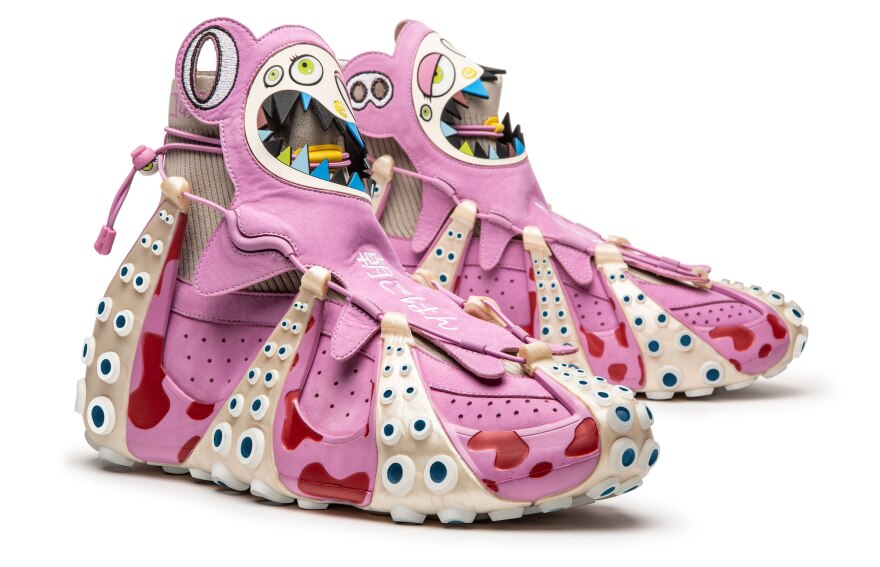Slipping on the right pair of shoes can instantly transform your look. Think of the way a high heel elevates a pair of jeans or how designer sneakers can make your walk bounce.
Long ago, shoemakers, also known as cobblers, could make only two pairs of shoes a day, often requested directly by a customer.
Today, footwear is a global phenomenon influencing fashion, music and sports.
"We currently produce 20 billion pairs of shoes a year, which is equal to almost three pairs per person on the planet," said Elizabeth Semmelhack, the Director of the Bata Shoe Museum in Toronto.
That institution loaned more than 70 pieces from its collection to the Sarasota Art Museum for an exhibit called "Future Now: Virtual Sneakers to Cutting-Edge Kicks."
The show is organized into themes from a historical perspective, with shoes from the 19th and 20th centuries to the brands that changed the industry.
The popularity of athlete-endorsed shoes beginning in the ‘80s launched a subculture called sneakerheads. And as specialty items became in demand, footwear companies generated even more hype by collaborating with celebrities.
Today, Semmelhack said designers often release small batches of elaborate limited-edition shoes.
"People who are taking the bull by the horns and trying to change the industry, people who are pushing the envelope of what is possible to wear on our feet," she said.

Take Mr. Bailey, Octopus, created by designer Daniel Bailey. The pink high top is an intricate but wearable sneaker featuring a tentacle-inspired sole. It was created for a collaboration with Japanese contemporary artist Takashi Murakami, who's best known for his vibrant colors and anime-inspired style.
Other highlights include 3D-printed shoes and sneakers.
"3d printing, which is a subtractive process, means that you can have your design and you peel it away the way Michelangelo sculpts a piece of marble," Semmelhack said. "So, you're able to do just incredible shapes."
Another trend in the industry is sustainability. Footwear designed and manufactured with materials and processes that minimize environmental impact.
In 2005, Stella McCartney became the first high-fashion designer to sign with Adidas’s sports-performance division. Her take on the Adidas Ultraboost 21 incorporated knit made from 50% recycled polyester.

Semmelhack said that with so many shoes produced each year, footwear designers are leaning more into eco-friendly footwear.
"So, I think of mushroom leather... things that are compostable, means that you could have something that's the latest fashion, and when you no longer need it to do its fashion job, then it can be recycled," she said.
Semmelhack said that each piece in the exhibit is wearable. So even if it's unlikely you'll ever need a pair of oversized shoes with motorized wheels that can rotate 360 degrees, it is fun to look — just for kicks.
"Future Now: Virtual Sneakers to Cutting-Edge Kicks" is on view through May 4 at the Sarasota Art Museum.
General admission is $20. However, museum members, those under 17, active military and veterans, those with Ringling College — including alumni — and Cross College Alliance students can get in for free.
For more information, click here.




